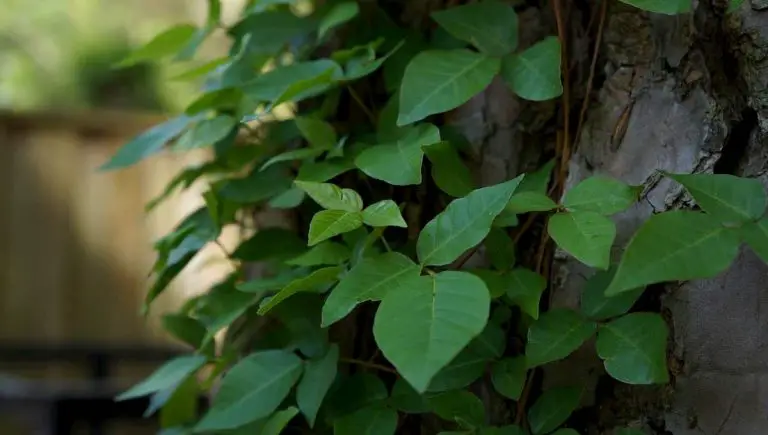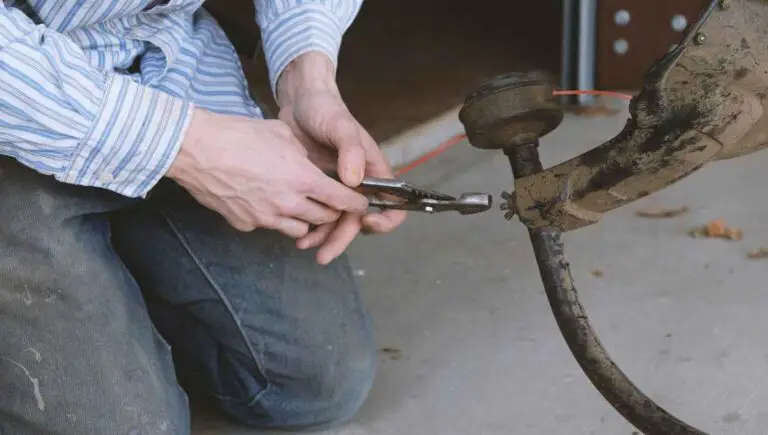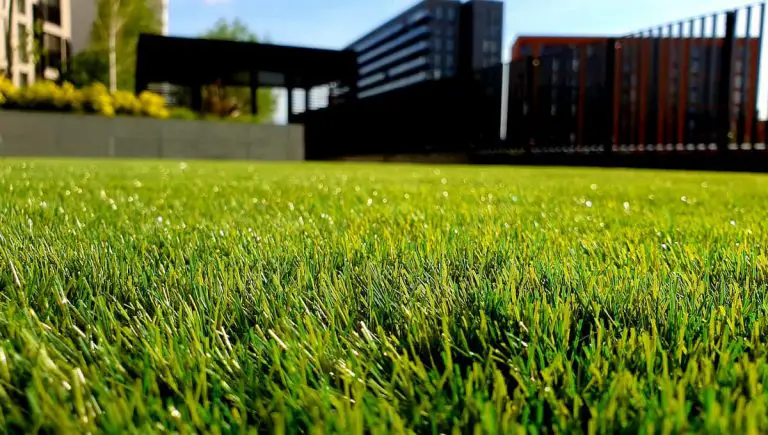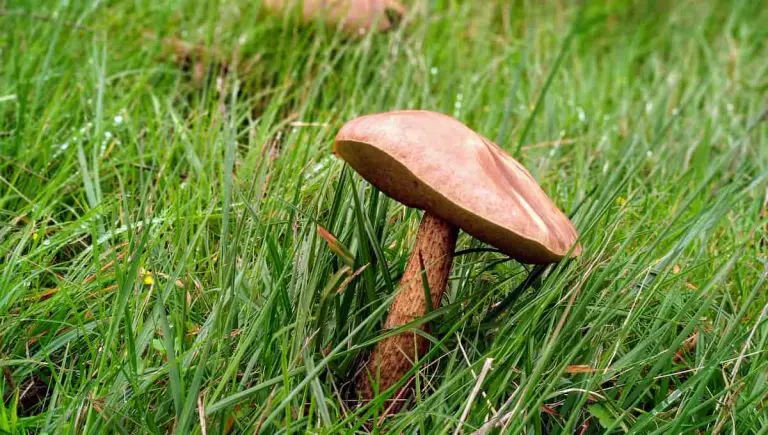How Long Does Milorganite Take to Work on a Lawn?

Caring for your lawn requires hard work, the use of the right tools, and fertilizers. If you’ve done any research on lawn maintenance, you may have heard about Milorganite and how it can make your lawn beautiful. How long does Milorganite take to work on a lawn though?
On average, Milorganite takes about 1 week to start producing visible results. If you don’t notice results after the first week, give it another week as it may need a little more time. After 2 weeks, you should start to see the green color in your lawn become more rich and vibrant.
When it comes to a well-manicured lawn, having the right type of soil won’t be enough to give you that bright green, thick, lush and healthy lawn appearance. You still have to give what it needs so it can thrive optimally – which is why fertilizing it would be a good idea.
If you plan on using Milorganite, you have to understand more about it to appreciate it. This article will answer all important questions you have about Milorganite, such as its mode of action, when to use Milorganite, the time it takes for you to see an effect on your lawn and so much more.
How Long Does It Take for Milorganite to Work?
If you see Milorganite not working on your lawn, keep in mind that it is not an overnight thing. So, how long does it take for Milorganite to work? Or how long does it take for Milorganite to show results? A lot of homeowners have reported seeing results within a week.
You’ll start to see the green color pop nicely due to the iron component in the product. However, long-term results should be observed in a couple of weeks.
About Milorganite: What Is Milorganite Made From?
When it comes to established nitrogen-rich lawn fertilizer, Milorganite is one of the oldest and most popular brands. Introduced in 1926 and manufactured by the Milwaukee Metropolitan Sewerage District, Milorganite lawn fertilizer contains microbes from wastewater that have undergone extensive heat treatment.
The process of making Milorganite usually involves the removal of excess water with the use of polymers and through filter pressing. The wastewater is then heated, dried and turned into granules, killing bacteria and pathogens in the process.
The majority of Milorganite’s components are organic and that makes it a biosolid lawn fertilizer. Despite that, the U.S. Department of Agriculture isn’t certified for use on organic farms.
What this means is that any produce grown on a Milorganite-fed lawn is not considered organic. Also, the product consisting of heat-dried pellets is not considered compost.
When to Apply Milogranite to Your Lawn?
Milorganite can work its magic for up to 10 weeks. With that, you may ask, “how often can I put Milorganite on my lawn?” or “Should I put milorganite down before it rains?” You should, actually. It is recommended that the fertilizer be applied before the rain so that once rain starts to pour in, the fertilizer can easily spread into the soil and exert its effect.
Apart from the proper schedule and knowing how often to apply milorganite, you need to know the type of grass you have on your lawn for the fertilizer to be a success.
Cool-Season Grass
Your yard will mostly have cool-season grasses when you live up North. You can either have Perennial Ryegrass, Kentucky bluegrass or Fescue. With that in mind, you need to apply the fertilizer four times a year.
The company also suggests following the holiday schedule, which means you need to build your fertilizing schedule around the holidays. For instance, apply the fertilizer in late Spring, just around the time of Memorial Day; in mid-Summer, around the 4th of July; early fall, around the time of Labor Day; and on Thanksgiving.
In winter, the last fertilizer application should be done before the first snowfall or deep freeze. Fertilizing at this time, during Thanksgiving, will prep your lawn for spring.
Warm-season Grass
You will also need four applications per year if you live in the south and have warm-season grasses such as Bermuda, St. Augustine, and Centipede. To help keep track of your fertilizing schedule, apply around Easter, Memorial Day, Labor Day and sometime early in October (with no specific holiday to follow).
How Often Should I Put Down Milorganite?
How long does Milorganite last? This is another good question to ask to help you determine how often to reapply the fertilizer. As established, Milorganite is a slow-release nitrogen-rich fertilizer.
In extreme weather conditions or when moisture is either too little or too much, the release of Nitrogen tends to be slow. When temperatures are moderate during late spring or fall, the release peaks.
The release of nitrogen will depend on weather conditions, but normally, Milorganite’s nitrogen is released within 8-10 weeks. So, how often can I put Milorganite on my lawn then? To make sure your lawn receives a steady supply of nutrients, the product is generally applied every eight weeks.
Can You Use Milorganite with Other Fertilizers?
The short answer is yes. The company states that Milorganite can be used in conjunction with other lawn care products like supplement fertilizers, herbicides, fungicides and pesticides. And since it’s gentle on your lawn, you don’t have to worry about over applying Milorganite by itself.
If you need to use it with other fertilizers, however, do read the instructions on your bags of fertilizers to avoid over-fertilization, which could result in lawn burns.
Does Milorganite Smell?
When you think about it, you are using microbes on your lawn. Due to Milorganite’s nature and the fact that it comes from wastewater, people have wondered, “Does Milorganite stink?” or “Is Milorganite made from human feces?” These are two popular questions asked when homeowners who just heard about Milorganite learn about its components.
First off, Milorganite is not a bag of human feces as what most people would easily and mistakenly assume, considering it comes from wastewater. Since it’s classified as a biosolid, it means Milorganite is a nutrient-rich byproduct of wastewater treatment.
According to a biosolids handbook by the U.S. Environmental Protection Agency, “biosolids are not raw human waste.” What Milorganite is is a bag of dead microbes that have eaten poop before it underwent treatment.
If you’re wondering about Milorganite’s odor, it is described to be earthy and musty, with a slight hint of fecal and sulfur odor. How long does Milorganite smell last, you may ask.
According to the company, this odor dissipates rather quickly and is reduced with rain or water application. Some homeowners, however, claimed that the smell is rather strong and may stay around for a bit if it’s hot and humid.
Is Milorganite Safe?
“Can milorganite make you sick?” This is also one of the common questions from anyone who’s heard about Milorganite the first time. Since it’s a byproduct of wastewater treatment, you might be cautious about using this fertilizer in the first place.
While it has undergone stringent testing to make sure it’s not only effective but also safe for the environment, we wouldn’t recommend using Milorganite without protective gear, like gloves. And of course, you wouldn’t want to store it within the reach of children and pets.
So what happens if your dog ingests Milorganite? We can’t deny that some dogs are just attracted to bad smells. They might even roll all over your newly-fertilized lawn because they are attracted to the odor.
While non-toxic, it may still cause discomfort to pets when ingested. As a general rule, always keep your bag of Milorganite out of reach of children and pets.
Milorganite and Bugs
Milorganite may attract dogs but does Milorganite attract bugs? Some homeowners do report having flies on their lawn while using Milorganite, while others said they’ve used the fertilizer for years without any issues about attracting bugs.
That said, it has not been established whether or not the organic fertilizer does, indeed, invite pests into your lawn.
This organic fertilizer, however, nourishes your lawn, making it lush and healthy – a conducive place for beneficial bugs, which in turn help keep away pests that might destroy your plants.
If you confirm that you have a pest infestation, it’s best to turn to organic pest control products, like Pentatonix’s Neem Bliss.
Does Milorganite Work as a Lawn Fertilizer?
Now that we’ve cleared things about human feces and poop smell, let’s move on to more important questions: Does Milorganite work? How long does it take for Milorganite to take effect? And what will Milorganite do for my lawn?
So is Milorganite an effective lawn fertilizer? Yes, it is, as many homeowners swear by. Being a slow-release fertilizer, Milorganite feeds your lawn slowly just when the grass needs it, instead of unleashing all of the nutrients. This is what makes the product an effective and successful fertilizer to use if you want that healthy green lawn.
Moreover, the slow-release aspect means that the grass is fed on a constant basis. As a result, your lawn will have a well-established root system and consistent, uniform growth.
Can I Use Milorganite in the Summer?
Yes, you can and should. Summer lawn care includes fertilizing and the 4th of July should remind you it’s time to give another round of Milorganite. Fertilizing during summer ensures the continued distribution of nutrients that your lawn needs.
“Will milorganite burn lawns?” You would normally ask this question when it’s summer and you’re worried about having brown spots on your yard, but no, Milorganite will not burn your lawn.
You can still apply the product even during the driest and hottest conditions as it does not contain salts.
To make sure you enjoy lush green lawn all summer, you have to remember to:
- Remove weeds
- Apply fertilizer
- Water the lawn
- Mow the lawn
Mowing is an important step in taking care of the grass in your lawn and should be done early in the summer. When mowing, remember to mow often, mow tall, and leave grass clippings.
If you frequently mow your lawn, you will need to mow only 1/3 of grass each time – and not a big chunk of grass at once. This way, you are encouraging healthy growth of roots and leaves.
You will also have shorter grass clippings, which will decompose quickly when left lying on the lawn and become added nutrients.
Does Milorganite Kill Weeds?
What Milorganite is not, however, is a weed killer. As stated on the official website, Milorganite is simply and strictly a fertilizer. For this reason, it is a good idea to use it along with a trusted brand like Scotts Turf Builder (Lawn Care Plan) for your lawn management.
It’s good to note, however, that because Milorganite promotes thick, lush lawns, the growth of weeds is minimized and weed seeds can’t germinate.
Is Milorganite Better Than Scotts?
Each brand of fertilizer has its own advantages. A lot of homeowners use these two together and see wonderful results. Which one you prefer to use depends on what your lawn needs and your availability to maintain the lawn. Below are a couple key differences:
#1. Overapplication
Both products are ideally applied using a broadcast spreader but you can easily burn grass with Scotts. Milorganite contains low levels of nitrogen so the risk of burning is minimized even with overapplication and reapplication.
#2. NPK (Nitrogen-Phosphorus-Potassium) Ratio
A complete fertilizer has three key nutrients: Nitrogen, Phosphorus and Potassium. Nitrogen facilitates growth and boosts the green color of the grass. Phosphorus supports root growth and development. Potassium if important to keep the plant healthy.
Milorganite’s NPK ratio is constant: (5-2-0) but it contains four percent iron. On the other hand, Scotts fertilizers contain different NPK ratios, depending on what you’re using it for. For instance, Scotts TurfBuilder Plus Weed Preventer has a fertilizer analysis of (21-22-4), ideal for new lawns.
Based on the fertilizer analysis, Scotts has higher nitrogen levels, which means it will make your lawn greener. But not only that – your grass will also grow at a faster rate. As a result, you might find yourself mowing more often.
In contrast, Milorganite contains such low amounts of nitrogen, but also has iron. This maintains the green color of your lawn without accelerated grass growth.
With this in mind, many homeowners do use Milorganite without issues and with great results. However, it is better to use Milorganite together with a supplement fertilizer, like Super Juice All-in-One Soluble Fertilizer,to make up for the lack of Phosphorus.
Milorganite Overseeding
Overseeding fills in bare spots in your lawn, making it appear thicker and greener. It enhances the green color of your lawn, plus you’re establishing the growth of different varieties of grass that can withstand diseases and insect attacks.
There are two primary reasons why you need to overseed your lawn:
- You have a decent lawn but is just lacking in thickness
- You have warm-season turfgrass that goes dormant in winter so you need to overseed with cool-season grass that thrives during those months
Milorganite is perfect for overseeding, which should be done after aerating. To do this, mix the fertilizer with your chosen grass seeds, with a recommended 4:1 ratio (four parts Milorganite to one part grass seed). You will also need a spreader for even distribution of grass seeds and fertilizer. In this case, Scotts Turf Builder EdgeGuard DLX Broadcast Spreader will be handy to have.
An alternative fertilizer for greener and thicker lawn when you want to overseed is Scotts 30158 Turf Builder Thick’R Lawn Sun and Shade. With this fertilizer you can also improve soil conditions so your grass can have a better root system.
How to Use Milorganite
“How do I apply milorganite to my lawn?” The holiday calendar mentioned above should be your guide on when you need to apply the fertilizer. As to how, you need to configure your spreader setting according to what is stated by the spreader’s manufacturer. So this setting will vary depending on the brand of rotary spreader you have.
Wear protective gloves when applying the fertilizer and remember not to apply using your bare hands. With a rotary spreader, spread Milorganite evenly across your yard by walking back and forth it.
The suggested application rate is 32 lbs per 2,500 sq ft for both types of turfgrass. If you have any remaining fertilizer particles in the spreader, you can take them out and put it back in the bag.
Milorganite Deer Repellent
The growing human population and the decline of natural habitat results in the deer finding their way to homeowners’ properties. And that is not good news. But if you’re using Milorganite on your lawn, you’re actually hitting two birds with one stone.
Does milorganite repel deer? More than being a popular fertilizer and considered as one of the best in the market, Milorganite also works as an excellent deer repellent. It may not have been explicitly stated on the product bag but homeowners swear that it works on keeping deer off your lawn and discouraging them from destroying your property.
You don’t even have to rely on just the word from homeowners who have used it, because the efficacy of Milorganite as a deer repellent has been scientifically studied.
According to this University of Georgia study, Milorganite has been found to be effective in repelling deer that love to munch on ornamental plants. While the fertilizer did not reduce the damage caused by deer, it had a significant overall impact.
The study, however, noted that the efficacy may still vary depending on certain factors and there is a possibility that Milorganite may not be so effective at repelling deer. Here’s an excerpt from the study:
From these results, we concluded that Milorganite® has potential as a deer repellent for ornamental plants. Though the repellent did not eliminate deer damage, it reduced the overall impact. The effectiveness of a repellent is highly dependent on climatic conditions, deer density, and resource availability. High deer densities and low resource availability may reduce the efficacy of Milorganite® as a repellent.
Milorganite may not be so effective at repelling deer during dry months. But when the rain comes, it reactivates the fertilizer’s odor, thereby increasing the repellent effect.
If you want to make sure you keep deer away so you can maintain your lawn and other ornamental plants, the fertilizer may need to be reapplied regularly. More research is needed to determine if varying application rates can have an impact on the animal’s tolerance to the product.
Quick Recap
Milorganite is considered one of the best lawn products in the market – and for good reasons. It’s easy to use and it doesn’t cause lawn burns even when you apply too much. Moreover, being a slow-release fertilizer, it makes sure that your lawn receives the optimum nitrogen requirements for proper growth and development.
Milorganite also lacks in Phosphorus, which is needed for the overall health of the plant. To make up for this, Milorganite is best used along with other fertilizers for an effective lawn fertilizing program.
Some homeowners are put off by the smell of Milorganite, which is why they prefer alternatives. But overall, in terms of performance, Milorganite does its job – alone or in conjunction with other fertilizers and lawn products, like herbicides and pesticides.
To ensure you have a great lawn using fertilizers, follow the instructions stated on the bag. You can pick up Milorganite fertilizer on Amazon and at your typical retail stores.







